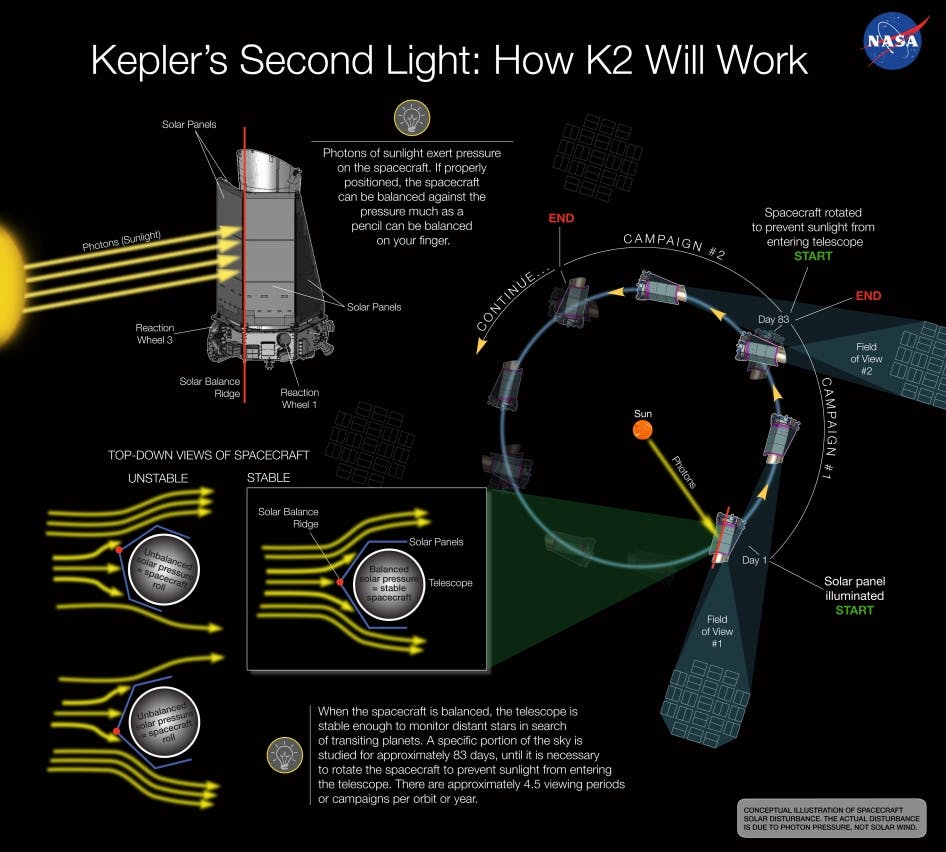It’s been a big month for NASA. First the Orion mission revived the possibility of manned space exploration, and now the revamped Kepler mission has discovered a new exoplanet 180 light years away from earth.
HIP 116454b is an exoplanet double the size of Earth, so close to its parent star it only takes nine days to complete an entire orbit around it. (By contrast, the star with the longest known orbit, Oph 11b, takes 2,000 years to orbit once around its sun.)
Paul Hertz, NASA’s astrophysics division director, credited the discovery to an innovative idea for repurposing Kepler’s original exploratory mission after mechanical failures set it back in 2013. The new mission, dubbed K2, relies on advanced use of solar panels to harness sunlight and create pressure on Kepler’s giant space telescope in order to keep it rotating and collecting data from throughout the galaxy.
“Today, thanks to an innovative idea and lots of hard work by the NASA and Ball Aerospace team,” Hertz said in a statement, “Kepler may well deliver the first candidates for follow-up study by the James Webb Space Telescope to characterize the atmospheres of distant worlds and search for signatures of life.”
Mission scientist Natalie Batalha reacted to the news with proper scientific decorum on Twitter:
<sniff> <sniff> I think I smell a new planet.
— Natalie Batalha (@nbatalha@mastodon.social) (@nbatalha) December 18, 2014
NASA seemed confident that further studies of HIP 116454b would determine whether it was a gaseous or a water-based world, or a rocky one like Earth itself.
Unfortunately for sci-fi buffs, the little planet is much too close to its sun, and thus too hot, to serve as a potential second home for future earthlings, but that won’t stop NASA from learning all it can in hopes that maybe studying planets outside our solar system can help us understand more about the planets in our own.
The latest find is by no means the last for the Kepler telescope, which has so far observed 35,000 stars and counting. Using the solar power technology, NASA hopes to continue observing everything from stars to supernovas.
Photo via NASA



